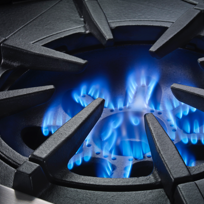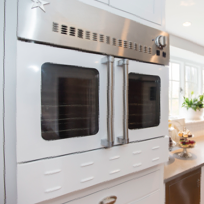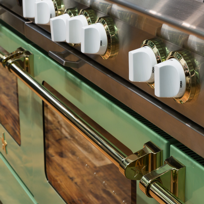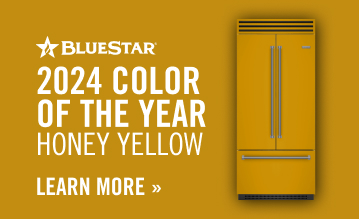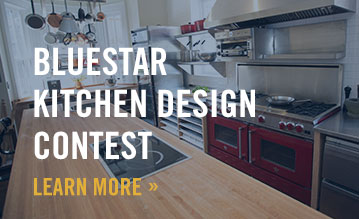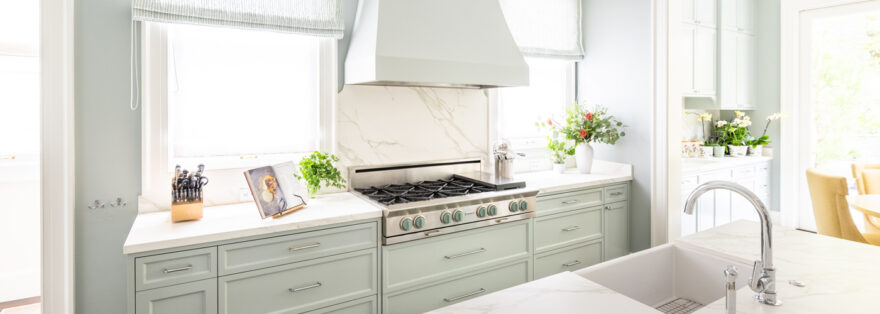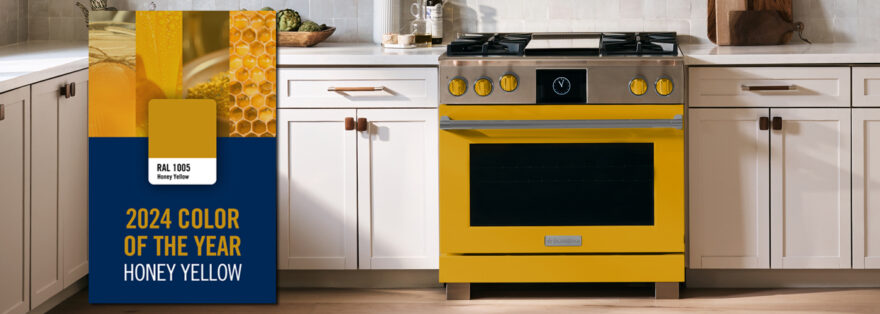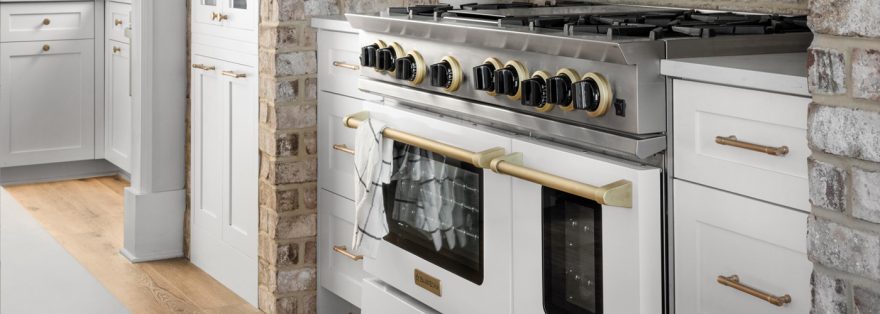By Kathy Orton and Deborah K. Dietsch
Is this the year you’ve decided to update your kitchen or redo your bathroom? Maybe you need a more functional space for meal prep or a more soothing environment for your morning ablutions. Whatever the reason, the new year is often a time for new beginnings, and what better place to start than in these two rooms?

Kitchens and bathrooms are not only two of the most remodeled rooms in a home — they are also two of the more expensive renovation projects. The average kitchen update cost upward of $66,196 in 2019, according to Remodeling magazine, while the average bathroom remodel cost $20,420. And they can be what makes or breaks the sale of your home. According to a 2018 blog post by online realty marketing and information company Trulia: “The rooms buyers most closely inspect (and judge) in a house are the kitchen and master bath. These are the interior spaces where the most value can be added during a sale, so they need to look their best.”
When spending thousands of dollars on renovations, homeowners want a look that lasts. No one wants their kitchen or bathroom to become dated within a few years. Being aware of the latest trends can help you avoid costly mistakes. You don’t necessarily have to follow the trends, but knowing what they are can ensure you don’t regret your choices later.
“While one may think trends are only about passing fads, that’s not actually the case,” said Nadia Subaran of Aidan Design in Silver Spring, Md. “Trends are an indicator of what is important to the consumer, as well as what’s happening by way of innovation and technology in the industry. We love beautiful things and manufacturers are charged and challenged to make sure those beautiful things are functional, environmentally friendly, responsibly produced and sustainable. Consumers want it all.”
But going with what’s hot now can be tricky. Today’s trendy can become tomorrow’s tired all too quickly. No one wants to sink thousands into a renovation only to discover their design choices are passe.
“A lot of the homeowners we see are remodeling for longevity, not necessarily for resale value,” said Mitchell Parker, editor at Houzz, a home remodeling and design website. “You should remodel for what you want your house to be like, how you want to live, not really think about trends or resale value too much. … A good designer will strategically help you make those decisions to personalize it but still keep it classic and timeless.”
As might be expected, two of the largest demographic groups, millennials and baby boomers, are driving trends in kitchen and bathroom design these days.
“Many [millennials] have really struggled to get into their first home,” said Dan DiClerico, home expert at HomeAdvisor, an online home-improvement resource. “Now that they’re finally in that first home, they want the experience to be frictionless and pain-free, the notion of stress-free homeownership.”
Millennials want kitchens that are low maintenance and high tech — preferences that explain the rising popularity of porcelain slab countertops, refrigerators with touch screens and cameras in ovens.
“More Americans are growing old and wanting to stay put in their existing home rather than seek assisted living,” DiClerico said.
Toilets with built-in bidets, no-threshold showers and elongated toilets at comfort height are helping make that possible.
To get a sense of the latest trends in kitchen and bathroom design, we asked several top designers in the Washington region and two national experts what they expect will be popular in 2020. Here’s what they had to say.
Kitchens
With open floor plans in many houses, kitchens are no longer separate rooms but part of the overall living space.
“The kitchen has become a multitasking space for entertaining, eating, doing homework or just sitting around watching a game,” said Shannon Kadwell of Anthony Wilder Design Build. “The open plan is important so other rooms aren’t blocked off and communication between the spaces is lost.”
But taking down the walls that once enclosed them has posed new design challenges.
“Kitchens have become so visually prominent,” Parker said. “The kitchen isn’t tucked away anymore. It’s front and center.”
Several designers said the most popular design style is transitional, a mix of traditional and modern elements, followed by farmhouse.
“People want a less complicated look in kitchens,” said Jennifer Gilmer of Gilmer Kitchen & Bath.

Softer colors are replacing stark white for the kitchen palette.
There is “a drive toward colors that are calming and soothing,” Parker said. “People are spending so much time in the kitchen with their family. It’s kind of the hub of the home. It’s nice to have that kind of bright, relaxing, soft, soothing color palette.”
Parker says light grays and light blues are popular, as well as creamier instead of bright whites.
Subaran isn’t shying away from color. She recently designed an island with spring green cabinets. She’s also seen lots of blues in kitchens.
“People are embracing color in cabinetry,” Subaran said.
Alexandria Hubbard of Case Design/Remodeling says Shaker-style cabinetry continues to appeal to homeowners.
“It’s a good compromise for an older home in need of a refreshed look,” she said.
Cabinets aren’t the only places color is showing up in kitchens. Kadwell has been doing a lot with ranges in either pale blue or cobalt.
“It is an easy color for people to use,” Kadwell said. “It’s not as vibrant as orange or red.”
Michael Winn of Winn Design + Build says the proliferation of professional ranges in the kitchen brought with them larger range hoods.
“With the building code requirement to provide dedicated ventilation over ranges, designers have begun to embrace decorative range hoods by making them a focal point of the kitchen,” he said. “This is particularly the case with the higher-output professional-style gas ranges, which require more powerful and larger range hoods.”
Hubbard says the range has always been a focal point in kitchens.
“But instead of the same dull appliances of the past, people now want an architectural statement that will be a conversation starter,” she said. “Unique shapes and sizes paired with bold colors make this focal point a work of art that expresses the personality of the homeowner.”
Because of their size, range hoods offer an opportunity to make a statement or a subtle way to achieve cohesiveness with the overall style of the kitchen. Parker has noticed wood appearing on more range hoods.
“We’re definitely seeing designers work in warmer tones through wood accents,” Parker said. “Bringing a little bit of wood higher up helps break up the large expanses of painted cabinetry.”
Porcelain slab countertops that look like marble but don’t stain like marble are gaining popularity.
“Porcelain is the wave of the future,” Gilmer said. “Porcelain is overtaking quartz. Quartz is more expensive because of China tariffs.”
Because they are easy to clean and can work in modern- or traditional-style kitchens, monolithic slab backsplashes are in demand, Winn said. Textured or three-dimensional tile is also sought after for backsplashes, Gilmer said.




